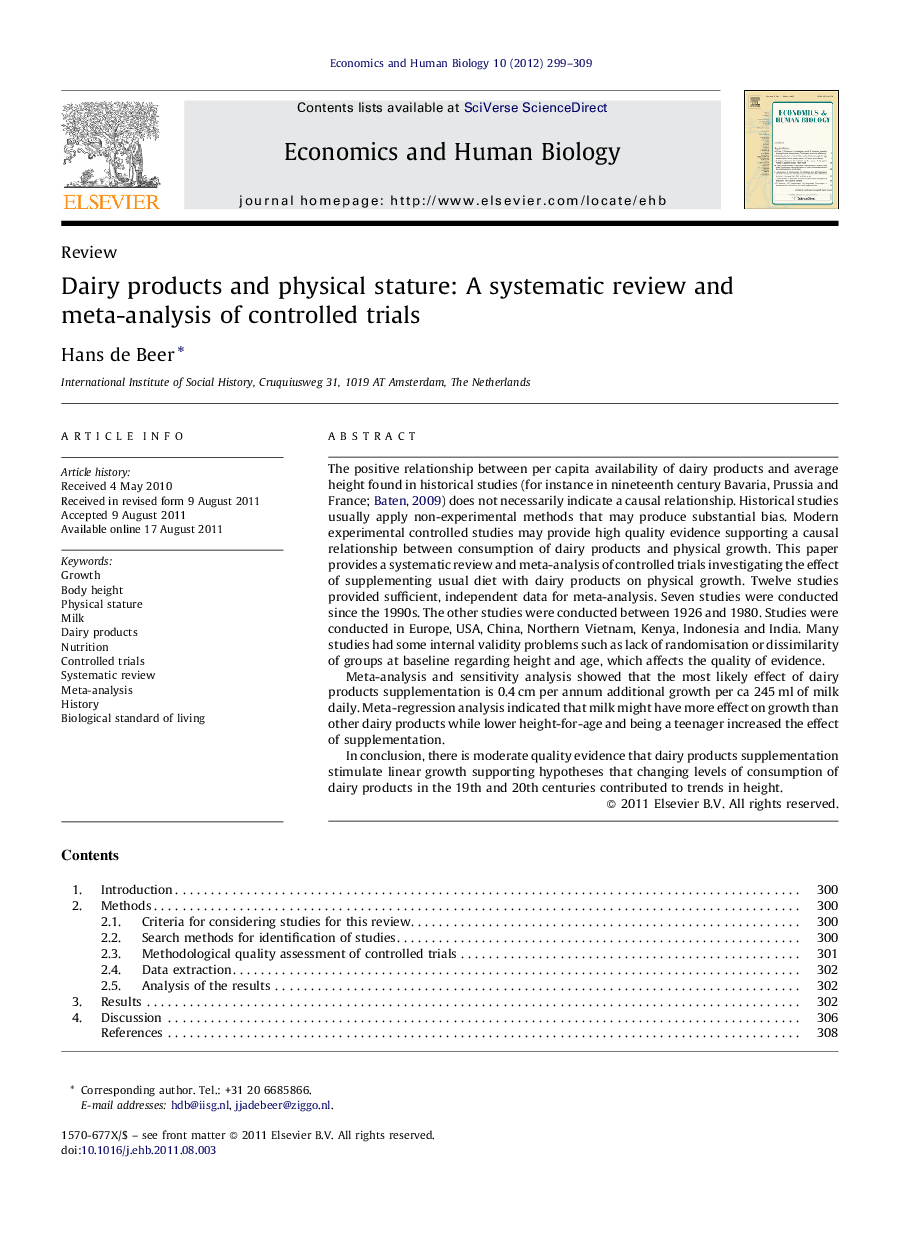| Article ID | Journal | Published Year | Pages | File Type |
|---|---|---|---|---|
| 5057202 | Economics & Human Biology | 2012 | 11 Pages |
The positive relationship between per capita availability of dairy products and average height found in historical studies (for instance in nineteenth century Bavaria, Prussia and France; Baten, 2009) does not necessarily indicate a causal relationship. Historical studies usually apply non-experimental methods that may produce substantial bias. Modern experimental controlled studies may provide high quality evidence supporting a causal relationship between consumption of dairy products and physical growth. This paper provides a systematic review and meta-analysis of controlled trials investigating the effect of supplementing usual diet with dairy products on physical growth. Twelve studies provided sufficient, independent data for meta-analysis. Seven studies were conducted since the 1990s. The other studies were conducted between 1926 and 1980. Studies were conducted in Europe, USA, China, Northern Vietnam, Kenya, Indonesia and India. Many studies had some internal validity problems such as lack of randomisation or dissimilarity of groups at baseline regarding height and age, which affects the quality of evidence.Meta-analysis and sensitivity analysis showed that the most likely effect of dairy products supplementation is 0.4Â cm per annum additional growth per ca 245Â ml of milk daily. Meta-regression analysis indicated that milk might have more effect on growth than other dairy products while lower height-for-age and being a teenager increased the effect of supplementation.In conclusion, there is moderate quality evidence that dairy products supplementation stimulate linear growth supporting hypotheses that changing levels of consumption of dairy products in the 19th and 20th centuries contributed to trends in height.
⺠This study assesses whether published studies investigating the relationship between dairy products supplementation and physical growth of children from the age of 2 years and adolescents show consistent positive results. ⺠Random effects meta-analysis and sensitivity analysis showed that the supplementation effect is about 0.4 cm additional growth per annum and per ca 245 ml milk daily. ⺠This effect size is larger when baseline height-for-age is lower and when children approach their pubertal growth spurt.
